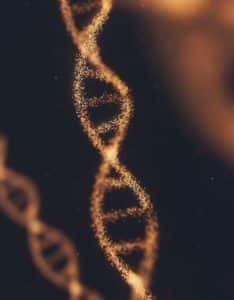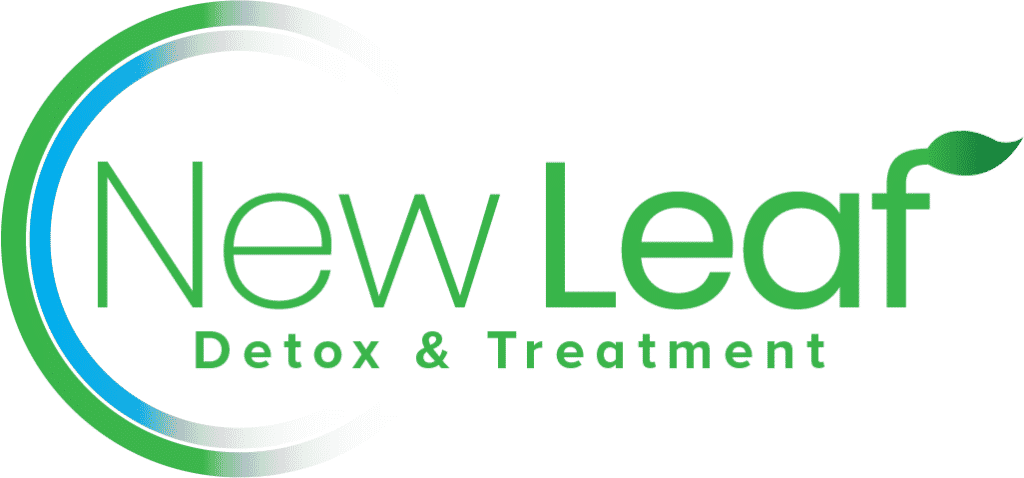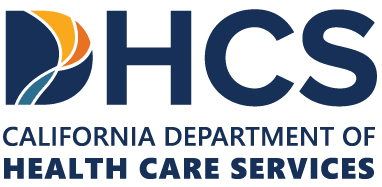Addiction As Legacy:
Genes raise the stakes
how addiction can
potentially run in the family
Table Of Contents
- Introduction
- Human Genome Project
- Human Genome Decoded
- Genetic Diseases
a. Types of Genetic Diseases - Epigenetics
- DNA: The Blueprint for Human Individuation
- Genetic Mapping
- Wired for Addiction
- Studies on Families
- Genetics and Addiction Treatment
- Medication-Assisted Treatment for Addiction
- Recovery at New Leaf Detox & Treatment
- Sources
Disclaimer: Only for fair use for educational purposes and illustration. We do not own the copyright to this video.
Introduction
Among non-clinical and lay people, drug and alcohol addiction have been accepted, anecdotally at least, as hereditary disorders. Stories abound in family lore and addiction memoirs of multigenerational alcoholism and drug use that inform and influence the vices of succeeding generations.
In the behavioral health field, the position on addiction as an inherited disease is more nuanced. It is viewed as one significant factor among several, including nurture and environment, that contribute to a complex chronic disease. The role of nurture and environment, including adverse early childhood experiences are viewed as significant factors in alcohol and addiction disorders.
According to this pedagogy, alcohol and drug use by family members can permeate the ethos and fabric of the whole family. Gradually, the use and misuse of substances by elders is normalized and either tolerated or accepted by children. Teenagers tend to rationalize and engage in alcohol and drug use if they see their parents or elders routinely consume alcohol and substances as part of family rituals.
Cultural rites of drinking as part of celebration and permissive use and tolerance of drugs among elders may easily influence young family members to participate in alcohol and drug use. In cases where parents and elders struggle with psychological disorders and consume prescription opioids, other members of the family, especially the young, may be drawn to misappropriate their family members’ prescriptions or seek prescriptions illicitly for themselves. The environment outside the family, from school and college to neighborhood and community, is also viewed as an influence that shapes people’s minds, especially young minds, to accept alcohol and drug use as a normal activity.
With the advent of DNA sequencing and gene mapping, however, scientists have torn down the shroud of mystery about genes and delivered new ideas about hereditary genes, susceptibility to heritability, and the impact of genetics on chronic diseases. Through the collective work of the Human Genome Project, scientists have identified inheritability and genetic factors in many chronic diseases including addiction. They estimate that a person’s proclivity to drug and alcohol addiction is increased by 40 to 60 percent as a consequence of genes.
Human Genome Project
The Human Genome Project is the audacious international scientific research collaboration initiated to do nothing less than identify, understand, map, and sequence every single gene that is contained in the architectural blueprint of human beings.
The thirteen year endeavor was proposed by the US National Academy of Sciences in 1988. The National Institutes of Health and the Department of Energy joined the effort by writing the plans to decode the genome—the vast library of genes that make up human beings, and each gene.
The exhaustive undertaking of sequencing the human genome was completed in 2003. Declared as “the treasury of human inheritance” the sequenced genome for the first time provided a window into the human race and its genetic heritage.
The genome is a history book - a narrative of the journey of our species through time. It's a shop manual, with an incredibly detailed blueprint for building every human cell. And it's a transformative textbook of medicine, with insights that will give health care providers immense new powers to treat, prevent and cure disease.
Francis Collins, former director
National Human Genome Research Institute

Human Genome Decoded
The human being has 46 human chromosomes—2 gender defining sex chromosomes and 22 pairs of non-sex or autosomal chromosomes. Taken together, they hold a mind boggling 3 billion base pairs of DNA and an estimated 20,500 protein-coding genes.
In 2003, the human genome was sequenced—a scientific feat as ambitious and seismic as the moon landing and nuclear fission. The effort required the identification, sequencing, and coding of 99 percent of genes, meticulously assigned singular identifiers. In total, 3 billion DNA letters were used to sequence the human genome, with 99.99 percent accuracy. The exhaustive labor required metaphorical drilling down to the base of the human body.
The scientists had to first make a determination of the order or sequence of all the genome DNAs bases. They followed the sequencing phase by mapping the location of genes for the majority of human chromosomes. They then presented causalities through linkage maps that will allow generational tracking of people for genetic diseases and other inherited traits. One of the discoveries was the revision of previous knowledge. Instead of the 50,000 to 140,000 genes previously estimated to be contained in the human body, the scientists mapped 20,500 genes.
Most importantly, in more than 70% of known human genes, the project reported 3 million genetic variations. They identified single nucleotide polymorphisms (SNAs), and complementary DNAs called cDNAs that vary in the human genome. These variations and mutations are harbingers of a wide number of disorders and diseases.
Genetic Diseases
Abnormalities in individual genetic composition can vary in their manifestation. A distinct, localized difference or mutation in the DNA of a single gene may have no effects to a person’s health, or some, or more. An erasure or multiplication of an entire chromosome or set of chromosomes, on the other hand, could result in gross and serious abnormalities. Genetic disorders can occur in several ways:
- Relay of gene abnormalities from parents to their children;
- Changes or mutations in people’s own preexisting genes or group of genes independent of parental/ancestral genes;
- Random genetic mutations due to inexplicable causes;
- Genetic mutations caused by environmental factors.
Types of Genetic Diseases
Single Gene Disorders
Caused by changes or mutations in the DNA sequence of a single gene. Cystic fibrosis, sickle cell anemia, and Huntington’s Disease are just three of thousands of single cell genetic diseases.
Multifactorial Inheritance Disorders
These are complex outcomes of abnormalities and mutations in multiple genes coupled with environmental causes. Obesity, diabetes, blood pressure, arthritis, cancer, and Alzheimers fall in this category.
Chromosomal Abnormalities
These defects are usually caused by malfunctions in cell division. Chromosomes are DNA and protein composed carriers of genetic matter embedded in each cell’s nucleus. Any defects to the structure or number of chromosomes can cause disease. In Down syndrome individuals for example, instead of two copies of chromosome 21 in all cells, they have three copies.
Mitochondrial Genetic Inheritance Disorders
Hereditary diseases passed exclusively from mothers to their children through DNA located in egg cells. Mitochondrial diseases include some forms of eye diseases, epilepsy, strokes, and dementia.
Epigenetics
Identical twins are born with the same genetic footprint. Over time, as they are exposed to differences in their environments and make choices of their own, their DNA gets marked with information that can affect their behavior, their risk of addiction, and even their response to treatment. Some of these changes can be passed on to later generations. This is epigenetics.
National Institute on Drug Abuse
Where genetics focuses on the composition of genes and DNA-carried genetic information, their traits, and impacts, epigenetics examines environmental and other factors that influence the materiality, expression, activity, and passivity of genes. Distinct from genetic disorders and mutations, epigenetic changes do not alter fundamental DNA genetic code and sequencing. Instead, they attach to DNA with chemical compounds that can alter gene function and result in gene malfunction.
DNA: The Blueprint For Human Individuation

A human being’s DNA is a foundational template and genetic instruction code for protein, chemical, and molecule creation that result in characteristics unique to individuals, both physical and psychological.
Epigenome, chemical engineering that shapes gene activity for human development, can go awry when exposed to toxic elements such as stress, trauma, environment and other factors.
A number of epigenetic variations have been linked to mental illnesses such as bipolar, depression, and schizophrenia.
Genetic Mapping
Genetic mapping or linkage mapping is a protocol that isolates one or more genes in a matrilineal or paternal line to yield evidence of disease transmission from parent to child. Through analysis of blood and tissue samples and isolation of DNA and patterns unique to family members, mapping allows conclusions about the types of genes involved, the genes contained in chromosomes, and the specific location of genes in chromosomes as they relate to certain diseases.
Genetic mapping has identified single genes responsible for single gene inherited disorders, as well as more complex broad spectrum disorders.
Wired For Addiction
Genetics and epigenetics can lay the groundwork for potential future addiction at various stages of life —during pre-natal development, early childhood, and transition to adulthood. According to scientists, a person’s risk to addiction increases by a staggering 40 to 60 percent due to their genes. Variations in protein in genetic codes of individuals also mark individual susceptibility to addiction.
Addiction Studies on Families
A number of studies on families and addiction with siblings, fraternal and identical twins, and adoptees suggest hereditary links and markers for addiction. Alcohol or substance use disorders in parents can be a hereditary disease for their offspring. It’s been found that both mothers and fathers who have substance use disorders can bequeath their addiction to their children.

In one international study on smoking and alcohol use, researchers found more than 400 sites in the genome and more than 500 variations to the sites that are responsible for smoking and alcohol use.
A study of 1,934 twins in Virginia, found that identical twins were more likely to use or abuse marijuana or cocaine in comparison to fraternal twins. Though external factors such as family and environment were influences in experimenting with drugs, alcohol and drug dependence were the result of genetic causes. Another study of male and female twins saw a marked gender dimension to drug abuse. Genetics played a bigger role than environmental factors in addiction in males.
Genetics and Addiction Treatment
The treasure trove of knowledge gained from genetic and epigenetic research about the singularity of each human body offers the promise of new treatments for addiction.
Gene expressions in each individual are unique. From the differences in variety and number of receptors in brains to the way drugs and medications affect the body, every human being is unique, The canon of knowledge available through genetics and epigenetic research allows a future where medication-assisted treatment (MAT) can be as unique as the individual who needs effective addiction treatment.
Medication-Assisted Treatment for Addiction
The gold standard of care in treating opioid addiction is evidence-based Medication-Assisted Treatment (MAT), a disease management model that strives first for patient stability through medication assistance, then as a launchpad for recovery, and finally as an integral tool in a comprehensive treatment plan unique to each individual. During the transitional period from opioid dependence to opioid abstinence, MAT allows the patient to detox from opioids in a safe way under medical supervision without drastic outcomes but in a slow taper. MAT detox regulates brain chemistry and biological functions, relieves the symptoms of withdrawal from opioids, diminishes cravings, and improves a person’s ability to function normally.
Custom-designed MAT plans—such as those offered at New Leaf Detox & Treatment in San Juan Capistrano—that include medication for detox and maintenance, psycho-social support, and behavioral health modules enable those who suffer from Opioid Use Disorders (OUD) to stay engaged in programs for the long term, significantly lowers a return to opioid use, increases immunity against relapse and overdose, and substantially increases the odds of sustained recovery.
When added to the arsenal of conventional treatment and wraparound support services, MAT is an exemplar in care for opioid use disorders. It has the capacity to address the chronic disease according to each patient’s needs. Several studies show that MAT reduces the likelihood of relapse and overdose fatality significantly.
FDA-Approved Medication-Assisted Treatment
The three FDA-approved MAT drugs for heroin and opioid dependency are Buprenorphine, Methadone, and Naltrexone.
Buprenorphine
Buprenorphine is a partial opioid agonist, that at low to moderate rates mimics similar but low grade effects of opioids such as euphoria or respiratory depression. It also blocks the effects of other substances. Since it is a long acting agent, it allows patients to have intervals in regimen. It diminishes withdrawal symptoms and cravings, and lowers the risk of misuse and danger of overdose. It is prescribed as a tablet, cheek patch, or six-month implant under the skin. It is prescribed in the doctor’s office after screening and evaluation.
Methadone
Methadone is a synthetic full opioid agonist that activates the same receptors in the brain that other opioids such as heroin and morphine do, but at a slower pace. It does not produce euphoria, but does reduce opioid craving and withdrawal and blocks the effects of opioids. It is a long lasting agent, taken once a day, and is available as liquid, powder, and tablets. Methadone is only dispensed in specialized treatment programs and clinics.
Naltrexone
Naltrexone is an opioid antagonist that prevents the effects of heroin, opioids, and alcohol on the brain by blocking opioid receptors. It is non-addictive, does not mimic the effects of other opioids, and prevents full relapse or overdose by other drugs because of its antagonist properties. The earlier pill form has been replaced by an extended-release monthly injectable, Vivitrol, which has proven effective in MAT. While Naltrexone is not as effective for heroin and opioid treatment alone, in combination with buprenorphine it is an effective treatment. Its use for successful treatment is supported by multiple scientific studies.
Medication-assisted treatment, when coupled with counseling, is the most effective current treatment available for opioid addiction disorders.
Recovery at New Leaf Detox & Treatment
At New Leaf Detox & Treatment, we are committed to meeting the needs of our patients with the most advanced best practices in addiction medicine and treatment and evidence-based standards of care, while always mindful of each client’s individual needs.
After the extensive patient-provider engagement, careful screening, and medical and psychological evaluation, our clinician’s design individualized plans to meet each patient’s specific needs. The plans are comprehensive in scope using a variety of treatment modalities from our cornucopia of specialized care plans that include Medication Assisted Treatment.

New Leaf’s Medication Assisted Treatment plans for best client outcomes to feature three of the four FDA Approved MAT drugs: Buprenorphine, its extended-release injection Sublocade, and Naltrexone. These three MAT regimens and protocols have high success rates for clients when complemented with counseling and psychosocial support.
The patient begins cognitive-behavioral treatment with an individual therapist as well as in groups with a counselor to address the whole host of issues afflicting the patient, including anxiety disorders. Psychotherapy plans and specific treatment modalities tailored for the patient include individual counseling, group counseling, anxiety-focused therapy groups, and process groups and activities.
The primary clinician and individual therapist and group counselor work in concert to treat the patient by resolving the underlying issues that led to addiction, followed by a variety of custom treatments that fortify the patient, clinical assessments throughout the process, and a considered discharge plan. Peer support, onsite medical assistance, family involvement, and post-treatment follow-up support are part of New Leaf’s standard of care.
For more information please contact:
New Leaf Detox and Treatment, San Juan Capistrano, CA.
Sources
- Drug Addiction, Learning Share Common Brain Protein. Duke Health.
- Signal Integration in the Brain. NIDA Science Meeting Summaries and Special Reports.
- Genetic Approaches To Addiction. Wiley Online Library.
- Addiction Science & Its Genetics. Wiley Online Library.
- Similarities In Adolescent Siblings’ Substance Abuse. National Institute of Health.
- Research Report Series on Cocaine Abuse and Addiction. NIDA Research Reports.
- What Is Cocaine? DrugAbuse.gov.
- Genome Browser of University of California.
- Community, Siblings, Heritability and the Risk For Drug Abuse. National Center for Biotechnology Information.
- Review Of Twin and Adoption Studies Of Adolescent Substance use. Child Adolescent Psychiatry.



